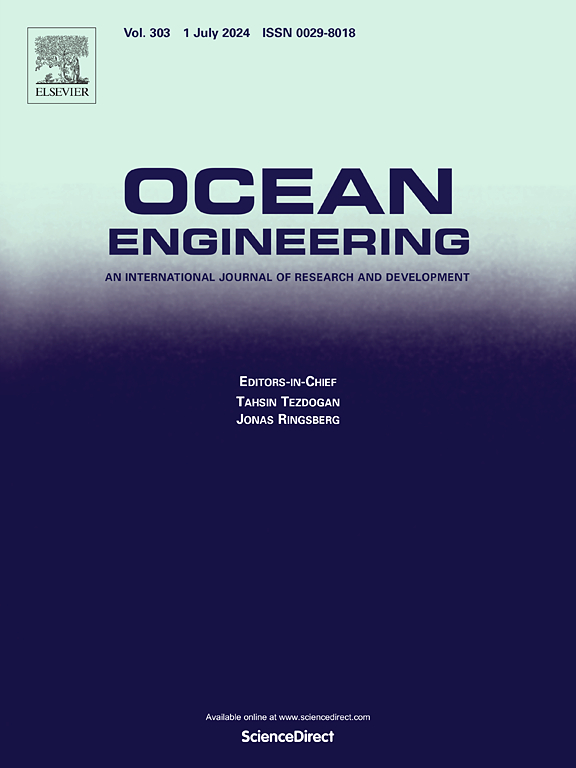多金属结核采集仿生水母机器人的研制
IF 5.5
2区 工程技术
Q1 ENGINEERING, CIVIL
引用次数: 0
摘要
海底多金属结核蕴藏着丰富的稀有金属元素,是人类可持续发展不可缺少的重要战略资源。针对海底多金属结核的采集和探测任务,提出了一种新型仿生水母机器人。基于多体动力学和数值分析方法,对仿生水母机器人行走系统和抓取系统的关键部件进行了设计和优化。对自走模式下仿生水母机器人进行了流固耦合仿真分析,揭示了抓手的开闭状态、触手的波动频率、波动幅度等关键结构参数和动力学参数对机器人推进效果的影响。研制了仿生水母机器人样机及相应的测试平台。进行了水下推进和样本采集实验,实验结果表明,机器人的最大上升推进加速度和速度分别为27 mm/s2和33.2 mm/s。实验结果表明,该机器人能够稳定高效地完成多金属结核样品采集任务,为海底多金属结核的采集提供了新的解决方案。本文章由计算机程序翻译,如有差异,请以英文原文为准。
Development of a bionic jellyfish robot for collecting polymetallic nodules
The polymetallic nodules on the seabed contain rich rare metal elements, which are the indispensable and important strategic resources for human beings' sustainable development. For the task of collecting and exploring seabed polymetallic nodules, a novel bionic jellyfish robot is presented in this paper. Based on multibody dynamics and numerical analysis methods, the key components of the bionic jellyfish robot vehicle system and gripper system have been designed and optimized. A fluid-structure interaction simulation analysis of the bionic jellyfish robot in self-propelled mode is conducted, to reveal the influence of key structural and dynamic parameters such as the opened and closed state of the gripper, the fluctuation frequency of the tentacles, and the fluctuation amplitude on the propulsion effect of the robot. The prototype of a bionic jellyfish robot and a corresponding testing platform is developed. The underwater propulsion and sample collection experiments are conducted and the experimental results show that the robot maximum ascending propulsion acceleration and speed are 27 mm/s2 and 33.2 mm/s, respectively. The experiments demonstrate that the robot can complete the task of collecting polymetallic nodule samples stably and efficiently, which will provide a new solution for the sampling of seabed polymetallic nodules.
求助全文
通过发布文献求助,成功后即可免费获取论文全文。
去求助
来源期刊

Ocean Engineering
工程技术-工程:大洋
CiteScore
7.30
自引率
34.00%
发文量
2379
审稿时长
8.1 months
期刊介绍:
Ocean Engineering provides a medium for the publication of original research and development work in the field of ocean engineering. Ocean Engineering seeks papers in the following topics.
 求助内容:
求助内容: 应助结果提醒方式:
应助结果提醒方式:


